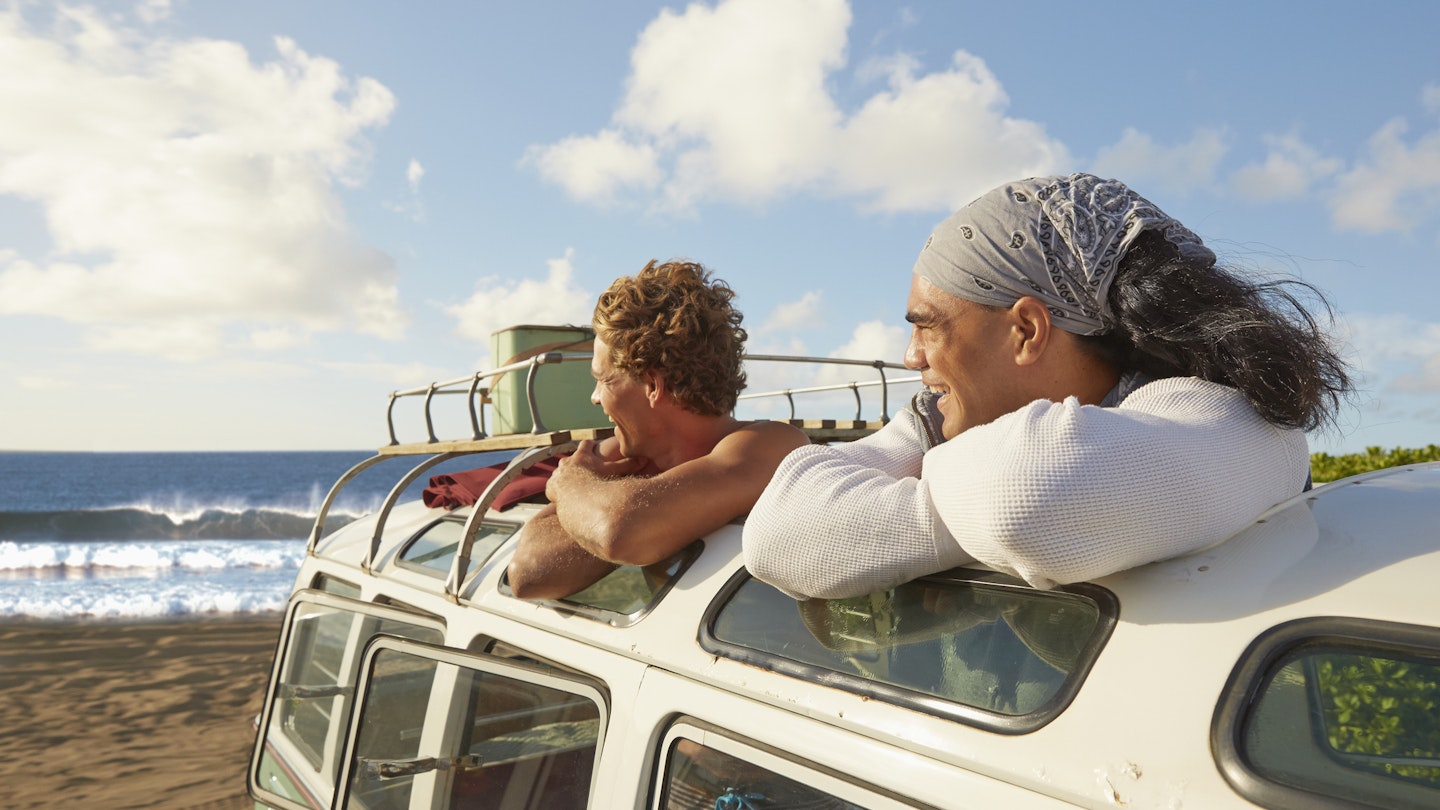Essential Travel Tips for Your Visit to Hawaii
One of the joys of visiting Hawaii is the islands’ pervasive laid-back culture – the lack of pre-planning and freedom from everyday worries is delightful. However, you’ll have a better experience if you consider a few details before and during your stay. From the best times to visit and how to budget, to the etiquette surrounding the islands’ best beaches and surf breaks, here are key things to know about traveling to the 50th US state.
1. Decide the Best Time to Go
You can visit Hawaii anytime – the weather is agreeable year-round. While it may be a bit rainier in winter and a bit hotter in summer, extreme temperatures are rare due to cooling trade winds. Consequently, winter (mid-December through mid-April) is the busiest tourist season, primarily because many tourists escape colder climates.
Summer also attracts crowds, especially from June through August, while prices can spike around holidays such as Thanksgiving and Christmas. For budget-conscious travelers, the slowest times are mid-September through mid-November and just after Easter until Memorial Day at the end of May. Moreover, surfers will find the largest waves in winter, while optimal windsurfing conditions occur during the summer months.
2. Make Reservations in Advance
Although Hawaii’s relaxed attitude extends to many aspects of life, it is wise to plan ahead for specific activities. For popular restaurants in Honolulu, it’s advisable to reserve a table before your visit. Additionally, free tickets for the boat to the USS Arizona Memorial at Pearl Harbor are claimed quickly, so securing your tickets online up to 60 days in advance is recommended.
3. Respect Hawaiian Culture
Evolving from ancient Polynesian traditions, Hawaiian culture has seen a revival since the Hawaiian Renaissance in the 1970s. Today, it encompasses much more than just melodic place names and luaus. The essence of Hawaiian identity is reflected in everyday language and practices that emphasize respect and inclusivity. Understanding this cultural context is crucial for any visitor.
Dos and Don’ts in Hawaii
Good manners in Hawaii revolve around respect and awareness. Here are some key points to consider:
- Do use aloha (hello/goodbye) and mahalo (thank you).
- Do attempt to correctly pronounce Hawaiian place names; your effort is appreciated.
- Don’t refer to the islands as “outer islands” – they are known as “Neighbor Islands.”
- Don’t try to speak pidgin unless you are proficient.
- Do ask permission before picking fruit or flowers on private property.
- Don’t be pushy for what you want; respect local customs.
- Do drive slowly, as residents often have short distances to travel.
- Don’t be startled by geckos or cockroaches; they are common in the tropics.
- Don’t disturb stones at sacred sites, as everything in nature is sacred in Hawaiian belief.
- Don’t get naked on the beach unless it is an unofficial clothing-optional area.
4. Dress Appropriately
The casual dress code in Hawaii is characterized by T-shirts and flip-flops, except at upscale restaurants and high-end resorts. A neat, modest outfit typically suffices for nice outings, often just requiring men to wear an aloha shirt and slacks.
5. Understand the ʻOkina
The ʻokina punctuation mark (ʻ) indicates a glottal stop in Hawaiian language, affecting the pronunciation and meaning of words. Increasingly, the spellings “Hawaiʻi” (with the ʻokina) and “Hawaii” (without the ʻokina) are used interchangeably, particularly in reference to the island’s evolving identity.
6. Learn the Local Surf Etiquette
While residents are generally welcoming at popular surf spots, there exists a pecking order in the water. As a newcomer, it’s important to understand your place; tourists may find themselves at the bottom of that hierarchy. By being generous and respectful, you can often expect waves in return. It is also beneficial to introduce yourself to locals at known surfing breaks.
7. Be Cautious of Floods
Sudden rainstorms can lead to flash floods in otherwise dry areas. Always check the weather before hiking or swimming in natural pools, as conditions can change quickly.
8. Protect Your Belongings
The islands are known for thefts from parked vehicles, especially rentals. Avoid leaving valuables in your car. If you must do so, conceal your belongings before arriving at your destination, as thieves may observe your actions.
9. Stay Aware of Your Surroundings
It is important to be vigilant, especially at night and in less populated areas. Some localities may harbor resentment toward tourists, so being respectful during your exploration is advised.
10. Be Aware of Scams
Visitors often encounter scams associated with fake activity operators and timeshare sales. Exercise caution and be discerning when approached with deals that seem too good to be true.
11. Avoid Trespassing
Hawaii enforces strict laws against trespassing on both private and public land. Respect all “Kapu” or “No Trespassing” signs and always seek permission before entering any areas that are not designated for public access.
12. Watch Out for Jellyfish
Stings from box jellyfish and Portuguese man-of-war can occur in Hawaii’s waters. Be cautious and avoid touching these creatures, even after they beach themselves, as stings can occur hours later.
This content aims to enhance your understanding of the essential elements needed for a safe and enjoyable trip to Hawaii. Remember to prioritize respect for the local culture and environment during your stay.





